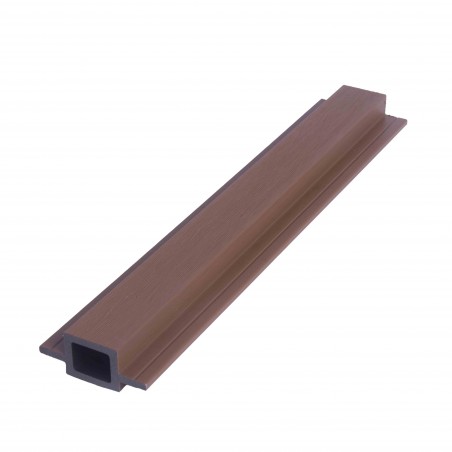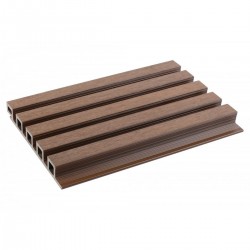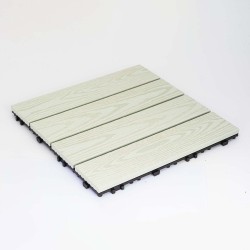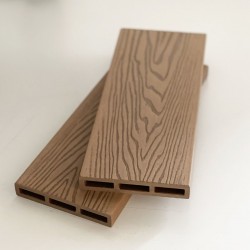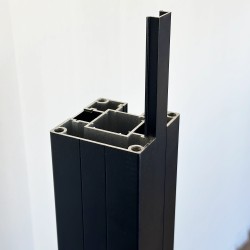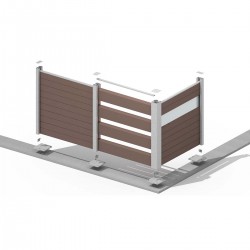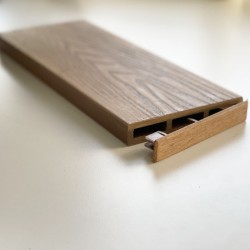The joist for the cladding with thick cuttings is an essential intermediate stem, with perfectly finished finishes to complete the construction.
It is applied at the end of the investment allowing the placement of the final connector.
.jpg)
Component Analysis
- Hardwood fibers (softwood-bamboo powder/fiber is cheaper and qualitatively worse) ............60%
- Primary recycled HDPE (not recycled again) ..........28,5%
- In addition to this, the Commission........3,5%
- MASTERBATCH (solid product of plastic, rubber, elastomer) in which the dyes or additives are optimally dispersed in high concentration....................2%.
- Lubricant.......................................... 1.5%
- %UV.................................................2% filters
- Accessory Plugins...............................2,5%
Environmental Characteristics
- It does not contain toxic and dangerous substances, formaldehyde or benzene.
- It does not contaminate the air and the environment.
- 100% recyclable.
Look and feel
- Look and feel of natural wood
- It does not require maintenance and paint.
- It has great color consistency.
Processing Properties
- Treated like wood, cut, spiked, or screwed.
- Very easy to install.
- Place with screws (hidden support) on a plastic, metal, or wood frame.
- The co-extrusion technique protects the composite material with a polyethylene film.
- The unique and exclusive formula of the polymer layer for surface protection guarantees that there will be no discoloration.
The Strength
- The strength is directly related to the base material used in the product.
- Our base material is 60% hardwood powder(softwood flour will be cheaper and worse).
- 30% primary recycled HDPE(If it is replaced by secondary recycling, tertiary recycling, or even LDPE, the price will be much lower and the hardness will be much weaker).
- 10% additives( The blending agent added to each of our products is 3.5%, and some factories only add about 2%. In addition, antioxidants, stabilizers, etc.)
Hardware placement TIP!
- In all WPC materials, it is advisable to pre-drill and then screw the elements (WPC boards), so as to avoid any cracks. Cracks during the first installation or application of the material are not visible but may develop over the years into capillary cracks.
